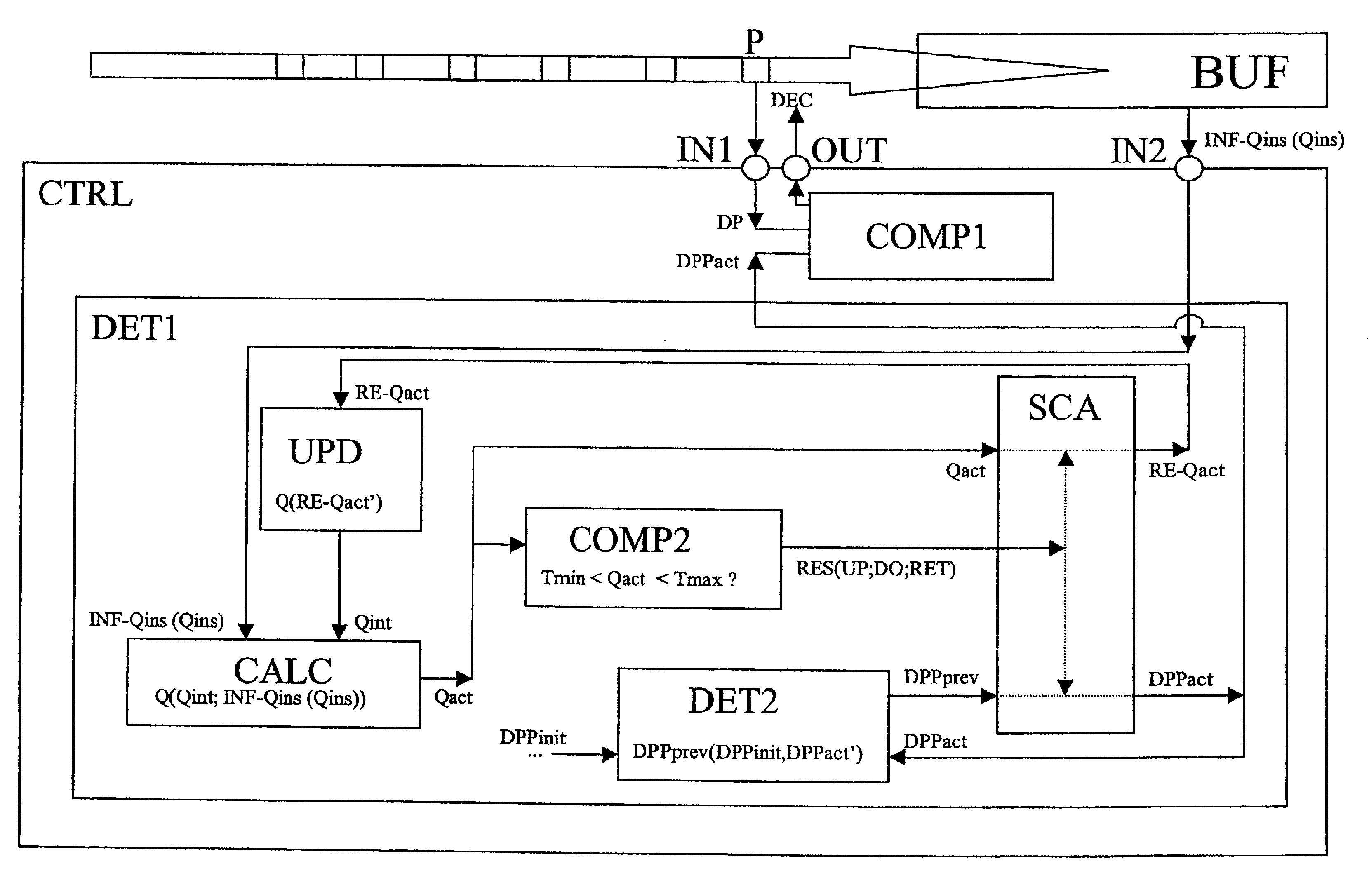Method to generate an acceptance decision in a telecommunication system
a technology of telecommunication system and acceptance decision, applied in data switching networks, frequency-division multiplexes, instruments, etc., can solve the problems of linear increase in the number of parameters and complex configuration of such a buffer acceptance mechanism, and achieve the effect of simple implementation
- Summary
- Abstract
- Description
- Claims
- Application Information
AI Technical Summary
Benefits of technology
Problems solved by technology
Method used
Image
Examples
Embodiment Construction
[0036]Referring to this FIGURE a controlling device CTRL will be described. First the working of the controlling device will be explained by means of a functional description of the blocks shown in the FIGURE. Based on this description, implementation of the functional blocks will be obvious to a person skilled in the art and will therefor not be described in detail. In addition a principle working of the control device CTRL will be described in further detail.
[0037]The controlling device CTRL and the buffer BUF are comprised in a router of a telecommunication system. The telecommunication system supports differentiated services. Hereby the packets of a data stream that are routed by the router comprise a drop priority indication. The drop priority indication can be implemented according to different ways. Since this is however not the aim of the invention, this will not be described here in further details. The aim is the fact that each incoming packet of the data stream comprises ...
PUM
 Login to View More
Login to View More Abstract
Description
Claims
Application Information
 Login to View More
Login to View More - R&D
- Intellectual Property
- Life Sciences
- Materials
- Tech Scout
- Unparalleled Data Quality
- Higher Quality Content
- 60% Fewer Hallucinations
Browse by: Latest US Patents, China's latest patents, Technical Efficacy Thesaurus, Application Domain, Technology Topic, Popular Technical Reports.
© 2025 PatSnap. All rights reserved.Legal|Privacy policy|Modern Slavery Act Transparency Statement|Sitemap|About US| Contact US: help@patsnap.com


